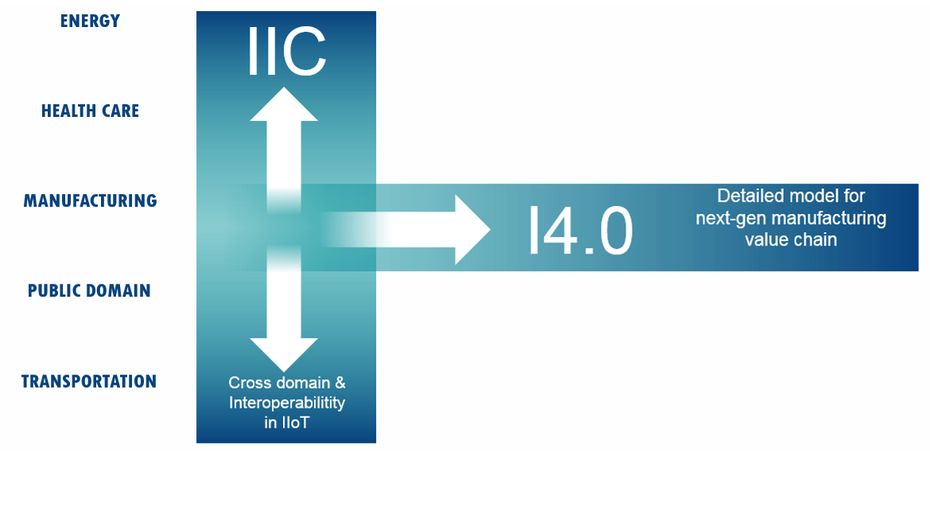
Microsoft Makes Huge Investment In OPC Open Source Code
 OPC UA was everywhere in the Digital Factory and automation areas of Hannover Fair 2017. Not only was the expanded OPC Foundation stand busy, an “OPC Wall” at the Microsoft stand was constantly packed. Microsoft executives took attendees on a digital path using OPC UA from the factory to the Azure cloud.
OPC UA was everywhere in the Digital Factory and automation areas of Hannover Fair 2017. Not only was the expanded OPC Foundation stand busy, an “OPC Wall” at the Microsoft stand was constantly packed. Microsoft executives took attendees on a digital path using OPC UA from the factory to the Azure cloud.
Spokespeople pointed out that OPC UA was crucial to a solution that was open, secure, and agnostic. While waiting for the finalization of OPC UA pub/sub (publish / subscribe), they wrote a transport in JSON and AMQP to get there.
The OPC Foundation announced an open-source implementation of the OPC UA technology, available on GitHub to truly enable the OPC community successful adoption of OPC UA across all markets and all platforms.
Microsoft contributed a huge amount of lines of code to this open source effort.
OPC UA is the set of standards for multivendor multiplatform secure reliable interoperability for moving /information from the embedded world to the cloud. The testimonial to the standards is a complete reference implementation that is now been posted as an open-source implementation, replacing the original OPC Foundation .NET deliverables that were developed and maintained for the last 10 years.
The original OPC Foundation .NET OPC UA reference implementation has been available to OPC Foundation members and last year was provided as an open-source implementation on GitHub. This version was targeted and limited to Microsoft Windows only.
The new OPC Foundation reference stack, based on the new .NET Standard Library technology, was developed and optimized by Microsoft to serve as the complete platform-independent infrastructure, from the embedded world to the cloud. This new version is enabled on the following supported platforms: Various Linux distributions, iOS, Android, Windows 7, Windows 8, Windows 8.1, Windows 10, Windows Phone, HoloLens and the Azure cloud.
One of the important features of the .Net Standard stack is the expansion of the security features to meet the needs of the Industrial Internet of Things (IIoT) applications, as well as the requirements of “Plattform Industrie 4.0”.
Additional benefits of the OPC UA .Net Standard Stack include:
- The .Net Standard stack is cross platform specifically enabling OPC UA applications.
- The .Net Standard API portability strategy is all about developing once and running everywhere: No need to special-case OS-specific functionality.
- The architecture of the .Net Standard stack focuses on managed code, which translates to rapid application development.
- Microsoft deliberately enabled the creation of NuGet packages, which allows suppliers to quickly integrate OPC UA support into their application with a few simple clicks.
- The .Net Standard stack includes increased security inclusive of support for SHA512.
- The .Net Standard stack enable support for cross-platform UI design tools through Xamarin.
- Microsoft has provided, in conjunction with the OPC Foundation, an extremely rich set of sample applications, inclusive of reference clients, reference servers, an aggregation server, an OPC classic wrapper and a web application to quickly display OPC UA telemetry data sent to the cloud.
- Microsoft has also provided, in conjunction with the OPC Foundation complete samples demonstrating Azure connectivity leveraging the OPC UA publish/subscribe technology (the specification of which is currently being finalized).
Microsoft’s Sam George, Director of Microsoft Azure IoT said “OPC UA has truly established itself as the interoperability standard for Industrial IoT. We are honored to work with the OPC Foundation on the continued evolution of the standard. The response from the Industrial IoT community to our .Net Standard reference stack contribution has been very positive.”
OPC Foundation’s President Thomas J. Burke said, “The Microsoft commitment to open standards, and specifically to the OPC Foundation is absolutely amazing. Microsoft is clearly a pioneer and a leader in developing and bringing to market the best technology that truly enables multivendor information integration and interoperability. It has been a pleasure to work with the Microsoft development team, and how they are enabling so many of the suppliers to have seamless connectivity to the Azure cloud, through their development and commitment providing an open-source implementation of the OPC UA technology”.
Stefan Hoppe, OPC Foundation’s Vice President said, “Microsoft is the strongest open-source contributor to the OPC Foundation’s industrial interoperability standard, OPC UA. Microsoft’s integration of the OPC UA code with Microsoft Azure IoT as well as Windows IoT allows companies to bring millions of devices and apps to the public cloud and manage them with one single application, no matter if the devices run on Windows, Linux, iOS or Android. Using this OPC UA implementation, IT and Manufacturing will merge seamlessly”.
Siemens’ Thomas Hahn said: “As a founding member, Siemens has supported the OPC Foundation for years. For us, open connectivity – from shop floor to the cloud – is a must. We therefore appreciate the availability of OPC UA technology as open source!”
The OPC Foundation will continue to develop, maintain and extend this new .NET technology as the new OPC Foundation endorsed open-source .NET reference implementation. Some of these significant new features to be added include the publish/subscribe extensions as well as support for important IoT protocols like AMQP and MQTT.


 Interoperability among systems spurs economic and technological growth. Two of the leading proponents of new strategies for this next Industrial Revolution that we are beginning recently met.
Interoperability among systems spurs economic and technological growth. Two of the leading proponents of new strategies for this next Industrial Revolution that we are beginning recently met.



